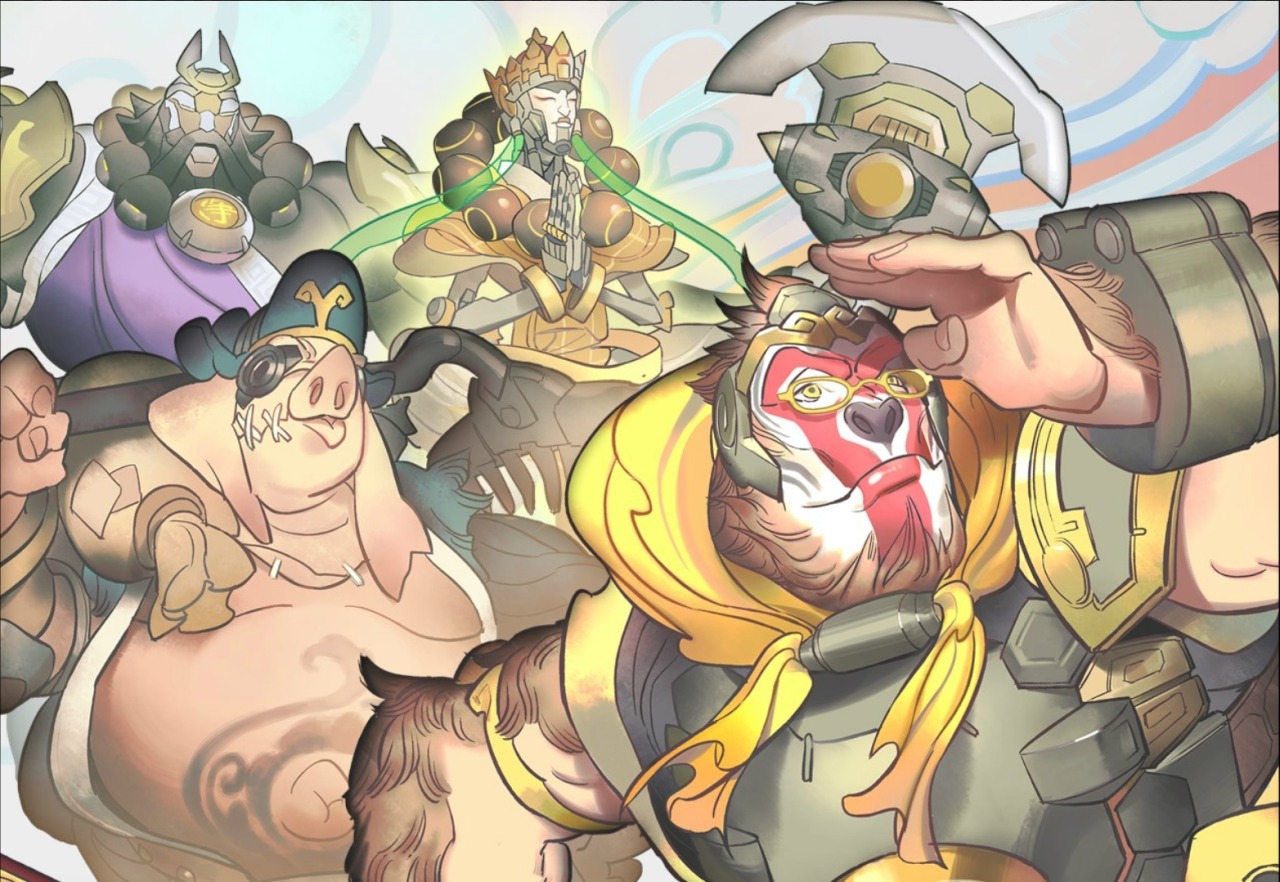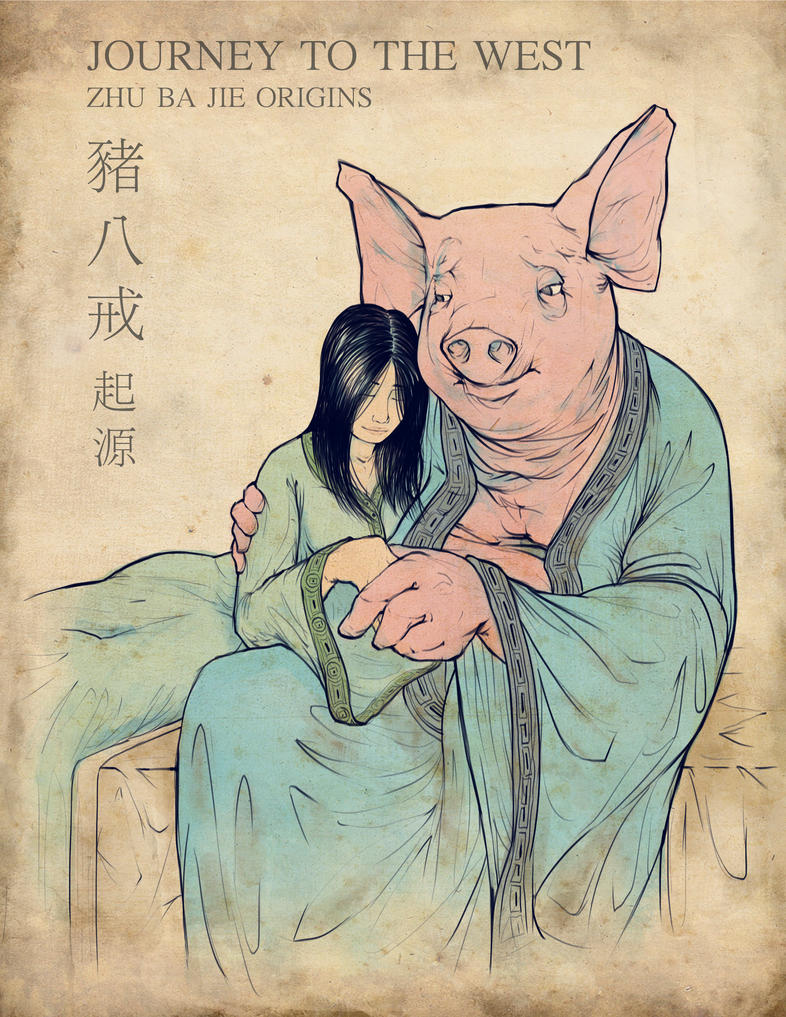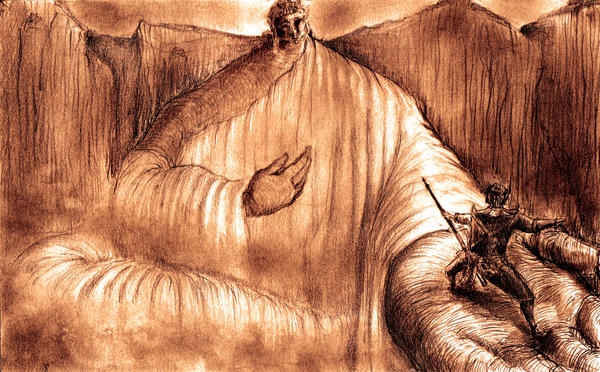When we last saw Sun Wukong, things were looking pretty rocky for the
Monkey King (pun fully intended). He had angered the heavenly host
so much that they had gone to war with him. Unfortunately, the
monkey proved to be a competent adversary, and was able to handily
defeat the armies of heaven. At this point the Jade Emperor called
upon a higher power, begging the Buddha to come and stop the Monkey
King. When Sun Wukong failed to best the challenge of Buddha, he was
imprisoned under a mountain for five hundred years.
Today's post is going to focus on what happened when those five hundred years were up. Unfortunately, it'll be a very brief overview. The entire adventure embarked upon by Sun Wukong can be read in the book Journey to the West, and is much too long for me to cover in a day (or even in a few posts). The entire history of the Monkey King I've discussed so far is basically just the prologue to the story. Still, I'll do my best to provide a rundown here so as to provide some closure to the story of the Monkey King.
Five hundred years after Sun Wukong was imprisoned, it was decided
that the holy sutras of Buddhism needed to be retrieved from India
and brought to China. Guanyin, the bodhisattva of mercy, chose a
monk by the name of Xuanxang to make the pilgrimage to the west. (Xuangxang was actually a historical monk who did set out on a pilgrimage to India, and returned to China with holy teachings.)
However, Guanyin knew that the journey would be dangerous. Many
demons and monsters would seek to stop Xuanxang from completing his
task. To this end, she also found several noble guardians to ally
with the monk. One of these guardians was the Monkey King.
It is telling that it is Guanyin who chooses the traveling
companions, because she represents mercy. The whole story focuses
upon compassion, mercy, and redemption. Each individual chosen to
aid Xuanxang is flawed.
As my other posts about him showed, Sun Wukong was wild, rebellious,
and possessed of both ego and temper. He had been imprisoned for
these flaws by the Buddha himself.
Zhu Bajie was another of the companions, and he was both lazy and
gluttonous. He had flirted with a major goddess, and been banished
for his insatiable lust.
Sha Wujing had been exiled for angering the Jade Emperor by breaking
a precious object, and reincarnated as a man-eating demon. He wore
the skulls of a group of holy men he murdered.
The last companion was Yulong, the son of a mighty dragon king.
Yulong had destroyed his father's pearl (a symbol of longevity and
wisdom among the dragons) in a fit of anger, and had been sentenced
to death for his crime. He spent most of Journey to the West
transformed into a horse to aid the others.
(A very unlikely group of heroes, to be sure. I'm reminded of the
DC/CW tv show Legends of Tomorrow: “We are a team of outcasts and
misfits. So please, don't call us heroes. We're legends.”)
In an epic journey spanning dozens of chapters, Xuanxang and his
companions set out for India. They were constantly set upon by
monsters and demons, who sought to kill the monk and devour his
flesh. Each time Xuanxang's co-travelers managed to save the monk.
Their journey took over a decade, but after much fighting (and some
bickering betwixt one another), the group arrived at the temple in
India and claimed the sutras. They then returned to China,
delivering the sutras into the hands of the temple.
Each of the individuals were rewarded for their efforts. Yulong became a naga, a magical being who was a combination of dragon and man. Zhu Bajie was granted the status of altar cleanser, meaning that he got to eat all of the scraps of food left at altars – a wonderful holy position for someone with such a great love of eating. Sha Wujing achieved nirvana, attaining a position similar to that of a saint in Catholicism.
But the greatest rewards were for both Xuanxang and Sun Wukong. Sun
Wukong's impetuousness had been tamed, and he had given his life into
service to a higher power. The monk and the Monkey King were both
given the gift of enlightenment, and were raised to the positions of
Buddha. Ironically, this meant that the monkey finally achieved his
goal – he was given a rank equal to that of anyone in heaven.
And so ends the tale of the Monkey King.
I hope you guys enjoyed it!
(Overwatch did a series of skins based on Journey to the West for their Lunar Festival event. They also did an animated comic, which can no longer be found on their website. However, some wonderful person uploaded it to YouTube, so you can watch it here. It's adorable.)
I'll see you guys next week!
I'll see you guys next week!
















